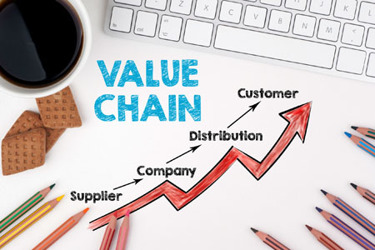6 Key Inbound Value Chain Considerations For Medical Device Companies
By Shane Partington, Clarkston Consulting

There was a time when the inbound supply chain was perceived as a back-end operation, where no news was good news. Today, when supply chains are expected to provide real customer value, there are some key considerations for supply chain leaders when building their inbound capabilities.
Medical device companies were hit especially hard during the pandemic due to legacy sourcing strategies, inbound supply chains that over-indexed on cost savings versus redundancies, and suboptimal processes, systems, and data visibility. Moving forward, medtech supply chain leaders who learn and evolve their approach will secure the proverbial “seat at the table” for the long term as a critical partner in creating tangible value through supply chain strategies.
Key inbound considerations for medical device value chains include sourcing strategies that enable dependable supply and rapid innovation, sophistication in balancing cost and risk, and agility and transparency in managing uncertainty that builds trust with customers.
1. Make Versus Buy
Getting the “make versus buy” decisions right at the start is critical for medical device companies because reconfiguring the network is a multiyear, cost-intensive journey. Moving manufacturing of a single medical device or component involves significant investments in testing, engineering, samples, and inventory, and this doesn’t even account for the opportunity cost of these resources had they not been deployed on a manufacturing transfer.
Longtime considerations, such as core competencies, cost, and manufacturing capacities, are key inputs for a “make versus buy” decision. Manufacturing utilization is critical for managing cost structures within medical device companies, particularly in an industry with increasing margin pressures. Additionally, leading companies are putting more weight on factors such as proximity to key markets, geo-political risk, and capabilities for redundancy.
2. Multi-Sourcing
Many leading medical device companies are taking a more serious approach to qualifying multiple supply sources for flagship products. The historic cost disadvantage of lost leverage due to splitting volume is being outweighed by the advantage of securing a steady supply in the event of a major disruption. Dual sourcing comes at a hefty cost, especially for medical device companies with significant tooling, validation, engineering, and supplier management expenses. However, the reality of extreme revenue and market share losses due to pervasive supply disruption has led companies to reassess and be more proactive in multi-sourcing for key products and components. Evaluate revenue risk and impact of disruption at a component level and invest in dual-sourcing strategies early in the product life cycle to mitigate business risk for the most critical parts.
3. Partner Selection
Selecting the right supply partners requires evaluation of many key factors and, subsequently, strong supplier management practices are important for sustained performance.1 Ensuring suppliers have strong quality controls and a compliant quality management system is paramount. In addition to quality, cost, and service, differentiating factors that are meaningful to supplier selection decisions should include process and design expertise, speed to market for innovation, manufacturing transfer competency, supply chain resiliency, and manufacturing footprint.
Suppliers with strong design and process expertise and service, as well as operations to scale and optimized costs, have a winning combination. Medical device R&D teams are preferring supplier partners that are close by and possess design competency, process expertise, and rapid prototyping capabilities. Not only do these factors enable quick turn of design concepts, but they also aid in troubleshooting issues, solving technical challenges, and refining designs collaboratively. These are invaluable supplier capabilities that medical device supply chain leaders should prioritize in sourcing decisions, especially when they are managing a high-tech portfolio with short product life cycles that require rapid innovation cycles.
4. Offshoring Versus Nearshoring
In the late 1990s, there was a mass trend in medical device firms moving significant manufacturing volume to low-cost labor countries like China. Nearshoring emerged as a more desirable option as medical device companies realized the hidden costs associated with offshoring. Nearshoring allows companies to take advantage of lower-cost geographies while also reducing transportation costs, carrying costs, and hidden and soft costs of managing supply networks across multiple time zones.
Ultimately, key commercial market drivers, manufacturing processes required, volumes, and material versus labor content of products should all be factored into off-, near-, and onshoring strategies. For example, if labor content makes up a small percentage of product cost due to highly automated processes, then the savings from labor arbitrage in offshore markets versus the convenience of local manufacturing becomes uncompelling.
5. Planning And Inventory
Sales and operations planning (S&OP) rigor is critical to ensuring alignment across the organization, from sales and marketing to the supply network. Forward-looking demand and supply plans, constraints and risk management, and inventory strategies are crucial components of a robust and reliable inbound supply chain. With a disciplined and integrated monthly planning cadence, you will gain key insights through evaluation of the assumptions and gaps that enable refinement of the rolling plan as well as driving inventory investments and positioning strategies to buffer for uncertainty. The aim is to enable maximum revenue while sustainably managing costs. Strong S&OP processes require cross-functional leadership engagement and commitment to bringing intelligence and insights to the process, collaborating on problem-solving solutions and scenarios, and ultimately unifying under an agreed operating plan with shared accountability.
6. Risk Sensing And Responsiveness
Predicting the future and anticipating every scenario is unfortunately not possible, which is why medical device companies that invest in risk sensing and response capabilities will be best equipped to recover quickly from unforeseen events. Doing this well requires dedicated resources and technology platforms with sophisticated analytics and external inputs.
Healthcare system supply chains are becoming more advanced in risk management and expecting more from their medical device suppliers, including data and risk transparency, proactive communication and partnership in event and crisis management, and risk planning. Some medical device companies are capitalizing on this opportunity to collaborate with the supply chain leaders of their customers as a differentiated service. They are also holding their upstream suppliers accountable for the same level of proactive communication, data transparency, and risk management practices.
Conclusion
Healthcare systems and providers struggled through the pandemic, often lacking critical supplies and products required to care for patients. Procurement and supply chain leaders have expanded the cost, quality, and technology focus to include valuing supply resiliency, risk mitigation capabilities, and data transparency in their medical device suppliers. While previously not a serious consideration in the purchasing decision, these inbound value chain factors are compelling differentiators for medical device companies competing for business within the hospital and healthcare system.
References
- Erickson, S. & Partington, S. (2022, September 9). Supplier Management Best Practices: The Heart of The Supply Chain. https://clarkstonconsulting.com/insights/supplier-management-best-practices/
About the Author:
 Shane Partington is a director in management and operations strategy with Clarkston Consulting. With more than 20 years of industry experience, she has expertise in operations, supply chain, sourcing and procurement, integrated business planning, organizational change management, and talent management. She has experience designing transformation strategies and spearheading large-scale initiatives.
Shane Partington is a director in management and operations strategy with Clarkston Consulting. With more than 20 years of industry experience, she has expertise in operations, supply chain, sourcing and procurement, integrated business planning, organizational change management, and talent management. She has experience designing transformation strategies and spearheading large-scale initiatives.
